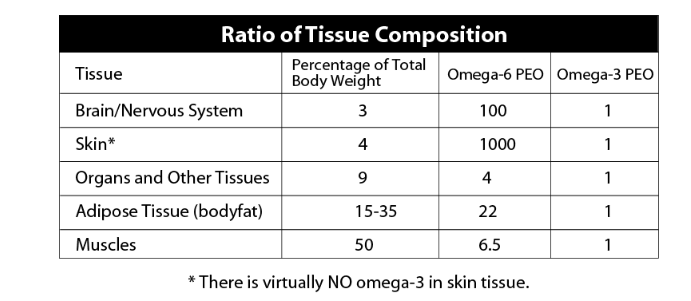Why do YES PEO's Work When Fish Oils Don't?
Jan 13th 2023
This article is derived from Professor Brian Peskin's "The Peskin Primer - Understanding Professor Peskin's Approach".
While his Primer was published many years ago, it is part of the scientific foundation of his work in Parent Essential Oils and the foundation to his formulation that YES Supplements are made from.
Read the entire document here (this is from page 7 and 8).
How and why PEOs work when omega-3 derivative fish oil doesn’t work?
Physiology is the prime science utilized to determine the correct tissue amounts of parent omega-6, parent omega-3, and their derivatives. Once these values are known, biochemistry may then be utilized. Fortunately, these physiologic values have already been determined, making it immediately obvious why fish oil can’t possibly work as claimed because, aside from the brain and nervous system, the body has little use for DHA/EPA. The prime issue that everyone overlooks is that the body can easily supply the brain and nervous system with adequate parent PEOs without the risk of overdosing on EPA/DHA. There is a maximum of <2% natural conversion of ALA to DHA and less than a mere 0.3% into EPA. Even babies adequately convert PEOs into derivatives. These physiologic facts have been obscured. Parent PEOs are much more significant as compared to derivatives, and no one until now has focused on them. The tables below exemplify key tissue physiology.

With all the focus on omega-3 fatty acids today, it is significant to note that the free fatty acids in human plasma ordinarily are composed of about 15% LA (linoleic acid, parent omega-6) and just 1% of ALA (alpha linolenic acid, parent omega-3), a 15:1 ratio with just 2% DHA (docosahexaenoic acid). Cholesterol esters and plasma phospholipids have ratios of 100:1 in favor of parent omega-6. Physicians need to know these important and
critical facts.

Amounts of EPA/DHA in fish oil
It is common amongst fish oil capsule manufacturers to have in excess of 300 mg of EPA and over 200 mg of DHA, with insignificant amounts of other omega-3 derivatives. They typically recommend 2 capsules each day for a total of over 600 mg EPA and 400 mg DHA daily. Three grams of PEOs per day is the general prophylactic dosage. Therefore the amount of parent omega-3 (ALA) is approximately 1,000 mg. Given that 2% maximum of this would be converted into the omega-3 derivative DHA, that would mean the body would naturally convert only 20 mg to DHA. Contrast this with the fish oil dosage of more than 400 mg, i.e., a DHA pharmacological overdose by a factor of 20!EPA overdose is even worse, as only 0.26% of ALA is normally converted. Of the 1,000 mg of ALA in Peskin
Protocol PEOs, just 2.6 mg is converted, whereas the fish oil supplement provides over 600 mg or a 250- old pharmacological overdose of EPA. This is analogous to giving the patient 250 aspirin tablets — you would kill him! Krill oil has less of the overdose amounts (approximately 130 mg EPA and 70 mg DHA per capsule) but it is still quite harmful. Given these facts, is it any wonder that fish oil categorically fails in experimental tests? No, of course not. Recommending these pharmacological overloads without compensating PEOs or omega-6 based derivatives is even worse, because of the gross disparity between the omega-6 and omega-3 series derivatives. Fish oil is harmful to most patients and the IOWA experiment proves its enormous NEGATIVE effect in the cardiovascular area.

